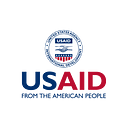“We can’t forget about the people left behind” — An Aid Worker in Afghanistan Shares Her Story
When the Government of Afghanistan collapsed, Vicki Aken, the International Rescue Committee’s country director in Afghanistan, was in Kabul. As the situation unfolded, her team moved quickly to restart and adapt programs and to ensure that all staff, including women, were able to continue their work. USAID spoke with her about what it’s like in Afghanistan now, what’s changed, and what the priorities are for humanitarian aid.
Q: What has it been like working in Afghanistan after the Taliban took over? What has changed?
“We didn’t expect what happened to happen so fast. In the beginning, there was a lot of uncertainty and concern — especially about if there would be fighting in Kabul.
Once it became apparent who the authorities would be, there was a lot of uncertainty about who we needed to talk to so that we could ensure our offices, staff and our assets would be safe and not targets. After we started to have those conversations, we were able to get back to our work.
Of course there was also a lot of anxiety amongst staff, particularly female staff. Would they be safe? Should they even stay? Then we had to figure out which of our programs we would restart and how we could restart them.”
Q: Were you able to restart all of your programs immediately, and were there things that you saw were of greater need now as opposed to previously?
“Our first concern was paying staff because many of them did not have enough money to even purchase food for their families. There was very little cash and it was hard to access our bank accounts. You can’t transfer money to their bank accounts if they can’t access that money. We also knew we were not going to reopen until all of our staff could come to work. Once it became clear that would happen, we had to do new assessments because so much had changed on the ground.
We’re shifting a lot of our focus to the delivery of health and nutrition services because it’s very clear that there is a food crisis. In the last five months, none of the clinic staff have been paid, they haven’t gotten additional medicine, and many of the clinics don’t have water. So we see healthcare as the number one need right now, especially since new areas have opened up where we can now provide services. They also need health services.”
Q: How have things changed more broadly for female aid workers?
“We made our delivery of aid contingent on all of our staff –including women– being able to come back because, in Afghanistan, you can’t reach women unless you have women on your team.
So let’s take for example the delivery of a food basket to a household. You can give a food basket to the head of household, which 90 percent or more of the time is a man. But you won’t know if that food actually gets to the women in the household unless you have females on your staff who can talk to those women and find out. Culturally, it is really important to have women on your team.
When I recently visited health clinics, I noted that most of the people in the clinics were women and children, so you need female staff in those clinics. That also means you need to have education for women. That education needs to go all the way up to university because you need trained health care workers.
Of course, there’s a lot of fear amongst female staff. Several of our female staff are unmarried and young, and they don’t know if it’s going to return to the way it was in the nineties. They don’t know if they are going to get harassed on the way to work. They don’t know if they are going to get married off. There are a lot of things that are very uncertain to them. You get some assurances at the central level, but it takes time to establish control over an entire country. So the assurances we might have from the government in Kabul, don’t necessarily mean that’s how the staff will be treated elsewhere.”
Q: What is something that you wish people knew about the situation in Afghanistan and what it’s like to provide humanitarian assistance?
“The number one thing that I wish people understood is that there are 40 million people inside of Afghanistan, and just a tiny fraction of them had anything to do with the civil war, and even fewer are those who work for sanctioned groups.
There are ways you can deliver humanitarian aid to a population that are not political. Humanitarian agencies are independent. Our focus is humanity — we’re neutral, we’re impartial, and we know how to deliver aid that way. We can’t just forget about the people left behind in the country.”
The United States is the single largest humanitarian donor in Afghanistan, providing nearly $474 million in humanitarian assistance this year alone, including more than $297 million from USAID.
Get more information on USAID’s humanitarian response in Afghanistan.
Follow USAID’s Bureau for Humanitarian Assistance on Facebook, Twitter, and Instagram for updates.
